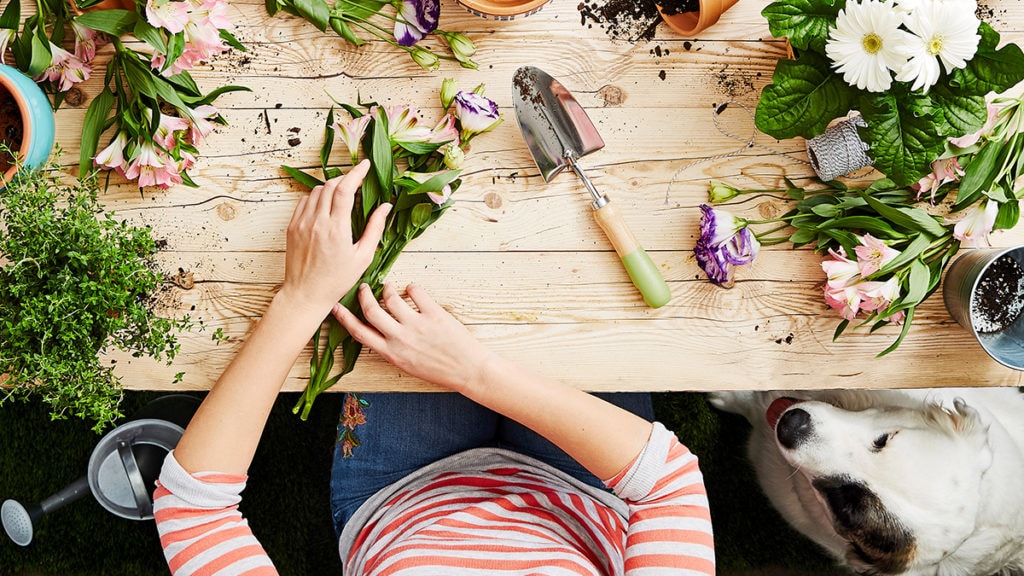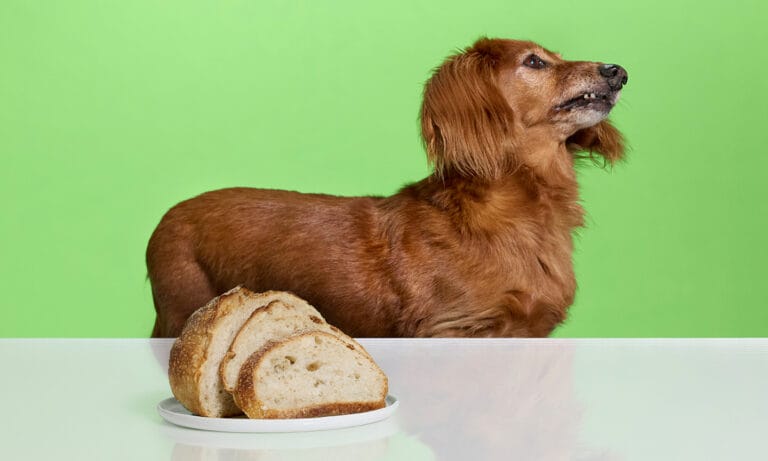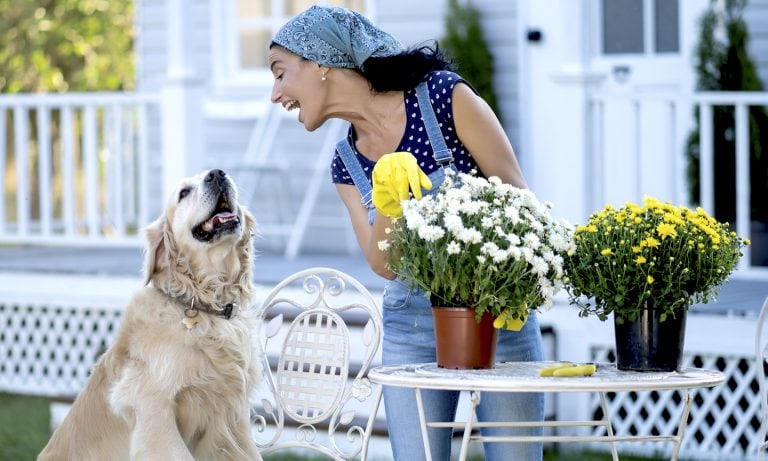Gardens can be a great place for dogs to spend time outdoors. They offer fun scents to sniff, critters to chase and places to lounge. If your dog thinks of your garden as more of a buffet than a place to explore, however, be aware that not all plants are safe for canine consumption. Some plants are toxic to dogs and can make them sick—or worse—if ingested.
But you don’t have to let your dream garden wither. With a little planning and research, you can grow beautiful, dog-friendly plants worthy of two green thumbs-up.
“There are many safe plants for dogs and they vary from region to region,” says Katie Malensek, DVM at Ravenwood Veterinary Clinic in Port Orange, Florida. “I would consider making a plan of what you would like to plant, and then doing some research to ensure safety for your pets, as this differs from region to region.”
10 Dog-Friendly Plants
Create an intoxicating dog garden that isn’t toxic to your dog with these beautiful, dog-friendly plants.
- Gerber daisies
- Orchids
- Roses
- Sunflowers
- African violets
- Spider plants
- Boston ferns
- Dwarf date palms/Pygmy date palms
- Pot marigolds
- Impatiens
Plants Poisonous to Dogs
There are thousands of plant and flower species; thankfully, only a few are highly toxic plants for dogs. If you think your dog ingested a toxic plant, seek veterinary care immediately.
Knowing which plants to avoid will help you protect your canine from accidental ingestion. Here are the top outdoor toxic plants for dogs to avoid, and what dangers they can cause if ingested, according to the ASPCA.
- Aloe vera – vomiting, diarrhea
- Autumn Crocus – severe vomiting, gastrointestinal bleeding, liver and kidney damage
- Azalea – even just a few leaves can cause vomiting, diarrhea, excessive drooling, coma and death
- Cyclamen – the roots of this plant are toxic and cause severe vomiting and even death
- Kalanchoe – this flowering succulent can cause vomiting, diarrhea and heart arrhythmias
- Oleander – the leaves and flowers can cause severe vomiting, slow heart rate and even death
- Daffodils – eating the bulb, plant or flower can cause severe vomiting, diarrhea, abdominal pain, arrhythmias or respiratory issues
- Lily of the Valley – vomiting, diarrhea, slow heart rate and possible seizures
- Sago Palm – leaves can cause vomiting, bloody stools, damage to the stomach lining, liver failure and even death
- Tulips and hyacinths – the bulbs are the most toxic, but the plant parts also also poisonous, and both can cause excessive drooling, vomiting, diarrhea, slow heart rate and respiratory function
Why Do Dogs Eat Plants?
While there is no definitive answer as to why dogs graze on greens, there are several theories. A common one is that dogs eat plants, especially grass, to help soothe an upset stomach or induce vomiting. Another is that grazing signals that a dog’s diet lacks fiber or another nutrient. Still another supposes that dogs simply like the tastes of the garden.
Whatever the reason, eating plants might be a difficult habit for your dog to break. Dogs are omnivores, and eating plants and grass is common, even in the wild. Canine grazing can be traced back to prehistoric times when wild dogs consumed undigested grasses and vegetation from their herbivore prey.
The most effective way to keep make sure your pup from eating toxic plants is by avoiding them completely.
Other Ways to Keep Your Dog Safe in the Garden
Planting nontoxic plants and flowers is essential to keep your dog safe in your garden. But there are other dangers to guard against, like pesticides and fertilizers.
“Generally, most pesticides, if applied correctly, are minimally toxic unless high amounts of contact occur,” Dr. Malensek says. “As a safety precaution, I recommend owners keep their pets off recently treated lawns and gardens for 48 hours before allowing exposure.”
You might consider using organic fertilizers or pesticides made with natural, nontoxic ingredients, such as diatomaceous earth. Some pet owners use pest-eating insects like ladybugs, mantises and nematodes.
Putting up a gate or fence are other options.
So, if your dog regards your garden of Eden as a banquet table, protect him with dog-friendly, nontoxic plants and provide safe areas in your yard for him to enjoy.
Chris Brownlow has been writing about pets for over 10 years. As a writer who believes in immersing herself in her topic, she has tasted more than 20 different flavors of dog and cat food while working on an advertising campaign for PetSmart. Prior to her pet days, Chris was a print and digital journalist at The Tampa Tribune and The Virginian-Pilot.
Share:









